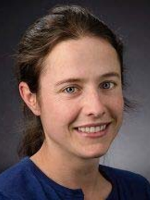Globally, significant resources are consumed by the seemingly disparate challenges of controlling metal deposition, electrocatalysis, and corrosion. These problems seem particularly unrelated when considering their differing economic drivers and technical needs. However, despite the specific differences between these challenges, all of them are fundamentally driven by the same need for prediction and control of electron and ion transfer reactions at charged, heterogeneous interfaces. These reactions can strongly depend on the interfacial properties due to local electric fields and solvation effects. Characterizing these interfacial properties, the properties of the electrochemical double layer, remains a significant open problem for computational electrochemistry.
In this talk, I will describe how we have developed and benchmarked improved continuum models for the electrochemical double layer, with the most promising of these models implemented in our open-source and freely accessible software package, JDFTx. Specifically, I will describe our progress towards the development of continuum solvation models that capture the correct magnitude and voltage-dependence of the capacitance of the double layer. I will then describe how we have refined our models through comparison with experimental data including the total capacitance of interfaces and geometry information for adsorbates in both electrochemical and ultra-high vacuum environments.

Dr. Schwarz received her bachelor’s degree in chemistry from Washington University in St. Louis, and her PhD in Chemistry at Cornell University. Following her PhD, she was a National Research Council Postdoctoral Associate at the National Institute of Standards and Technology (NIST). Dr. Schwarz is currently a Research Chemist at NIST. She is interested in developing and applying computational approaches to understand the properties of electrochemical interfaces.
